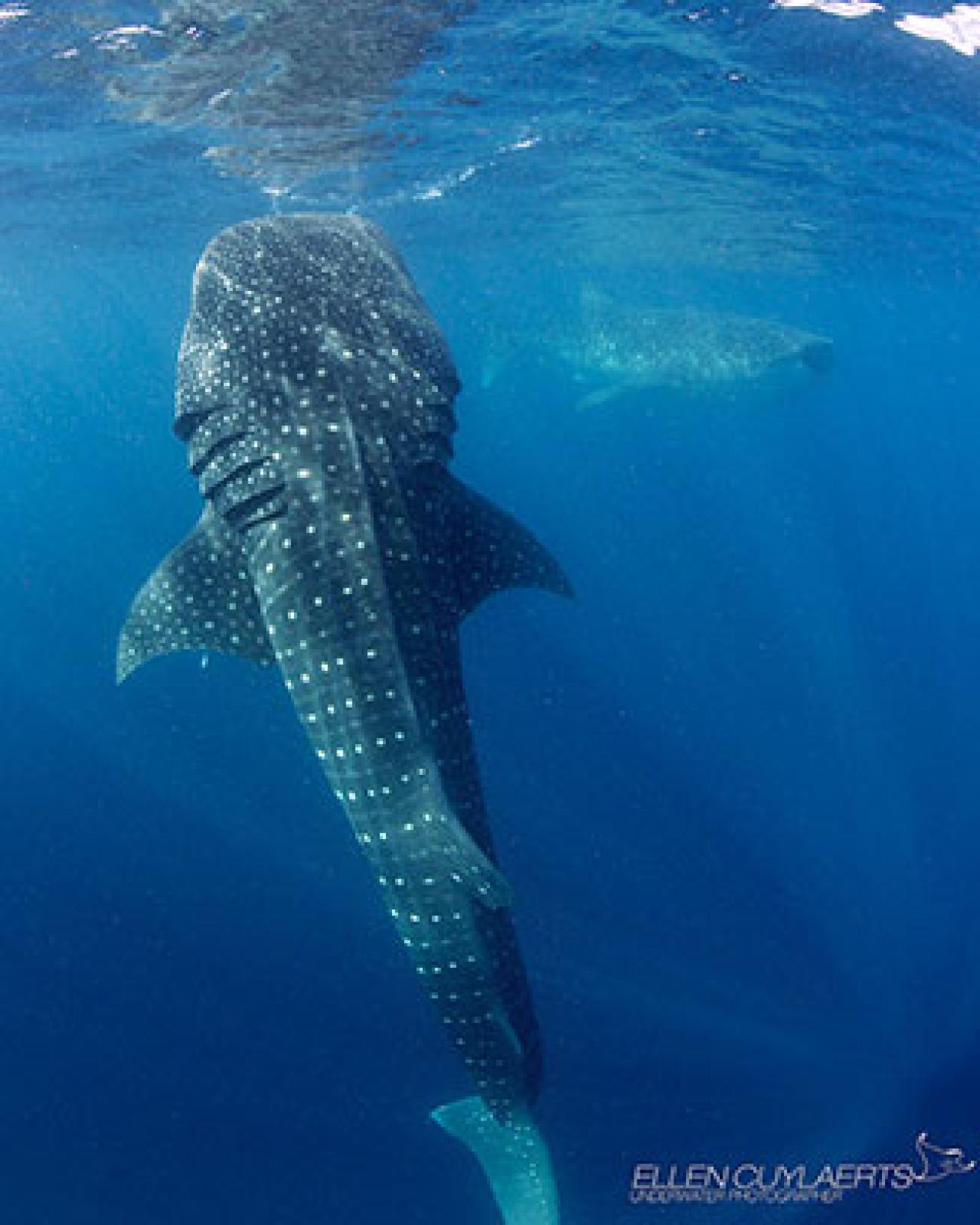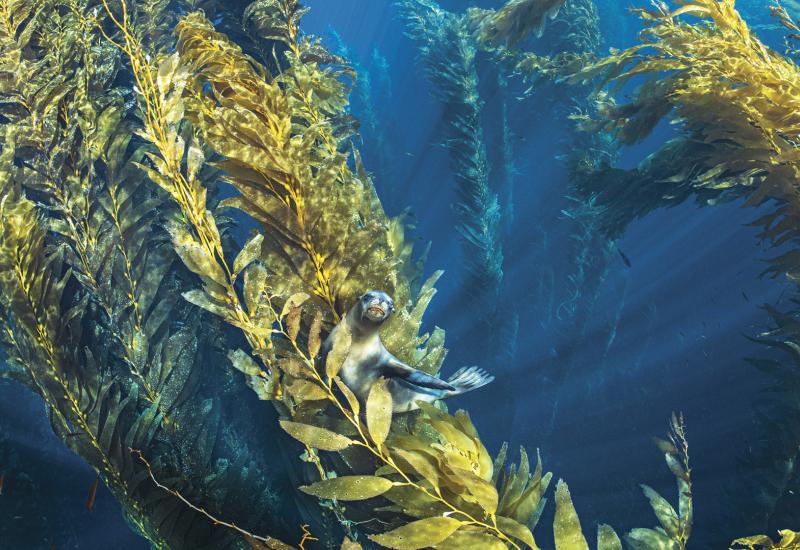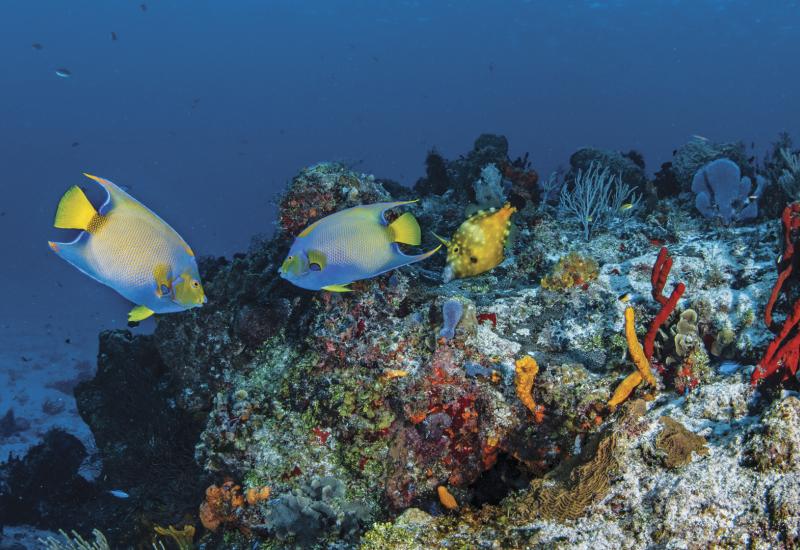Behind the Lens: Whale Shark Wonder

Picture was taken with Nikon D800, Nikkor 16mm lens, natural light, ISO 320, f/13, 1/160 sec (no strobes allowed)
Most divers have a bucket list: sites we want to dive and animals we want to encounter sometime in our lives. I have one too — or should I say “had one” — my latest trip was completely mind blowing, and instead of checking one item off the list, I could almost put the entire list in the bucket.
Our travels brought us to Isla Mujeres, a small island close to Cancun on the Caribbean coast of Mexico. The biggest fish in the ocean, whale sharks, aggregate 20 miles north of here to feed every year from mid-May to September. Their presence generates big business for boat operators in Cancun and on Isla, since a trip out to the feeding grounds costs about $125 dollars per person and most boats seat at least eight. A lot of the skippers are former fishermen, and although some don’t realize the importance of conservation for the health of the oceans, they do understand the language of money and smiling, happy customers having the time of their lives.
After over an hour on the boat, with no land in sight, the experienced captain brought us to a diver's Walhalla. Big dorsal fins slice the surface, followed seconds later by the tip of a tail fin; wide-open mouths gulp the nutrient-rich water, filled with millions of fish eggs. Hundreds of whale sharks feed here, and to see them so nearby brought on a pounding heart and pure joy because it would happen — I, little Ellen, would swim with these giants.
I wrote “a diver's Walhalla” but I have to correct myself since this was a swimming and snorkeling experience, and one straight out of a dream. The moment I got in the water, I stared down beneath me as the first whale shark passed us some 30 feet away. The animal was huge and its movement appeared to be slow (but was not at all, 3 miles per hour is hard to keep up with). Our first impulse was to fin a little closer but by the time we neared, the only body part in sight was its tail fin waving goodbye. Laughing in my mask, a second whale shark passed much closer and decided to empty his bowels. We joked that she was not really polite since the cloud of dissolving poo was not small but looked like a series of stacking thunderclouds and diminished the visibility to 10 feet. Back to diving in the clearer waters, an Oceanic manta ray flew up from the depths and graciously turned around us.
From that moment on, it even got better. We started to anticipate the location of the feeding whale sharks by looking at the surface and the direction their dorsals were going.
We proceeded by finning our lungs out in search of good shots while also trying to get a bit deeper where incredible manta action was going on. The Oceanic manta rays swam upside down with their white bellies visible from the surface while barrel rolling one after the other. Add some sightings of mobula rays and songs of dolphins and you can begin to imagine our four days on the water.
These encounters were surreal and they seem so far away already, with only pictures as evidence of our adventure. Although I could scrap them from my bucket list, I will not do that yet. I'll keep them, giving me the excuse to take this trip again. In my mind it was a dream within a dream.
We went out with bigfishexpedition.com. During our six-night stay we spent four days in the water on the Preziza, one of the boats, with its excellent operator Rodrigo Friscione Wyssmann of Solo Buceo. No strobes or weight belts allowed, wetsuit or life jacket required for safety reasons.
Ellen Cuylaerts relocated four years ago from Belgium to the Cayman Islands, Grand Cayman. She studied history in Antwerp and got her master's degree in modern history and education. Cuylaerts homeschools her two gifted teenagers and decided to take up scuba diving in June 2011. Soon, she became a Master Scuba Diver and took up her childhood dream of being a photographer and combined it with the wonders of the underwater world. After diving a few months, Cuylaerts signed up for a workshop on the island with renowned underwater photographer and marine biologist Dr. Alex Mustard, and she decided to use the skills she learned to spread awareness of and contribute to the conservation and preservation of the fragile marine environment.
Within the year, she won three first prizes in The Cayman National Cultural Foundation (categories: Underwater, Arts & Culture and Nature Wildlife), and last November, she placed second in the International CITA Photo Competition (Scenic and Creative) and received honorable mentions in all other categories.
Cuylaerts's basic concern is the decay of the oceans by pollution, overfishing, the brutal act of shark finning, and dolphin and whale slaughtering. By showing the beauty of the underwater world, she hopes people will start protecting what they love like Jacques Cousteau once wished.










